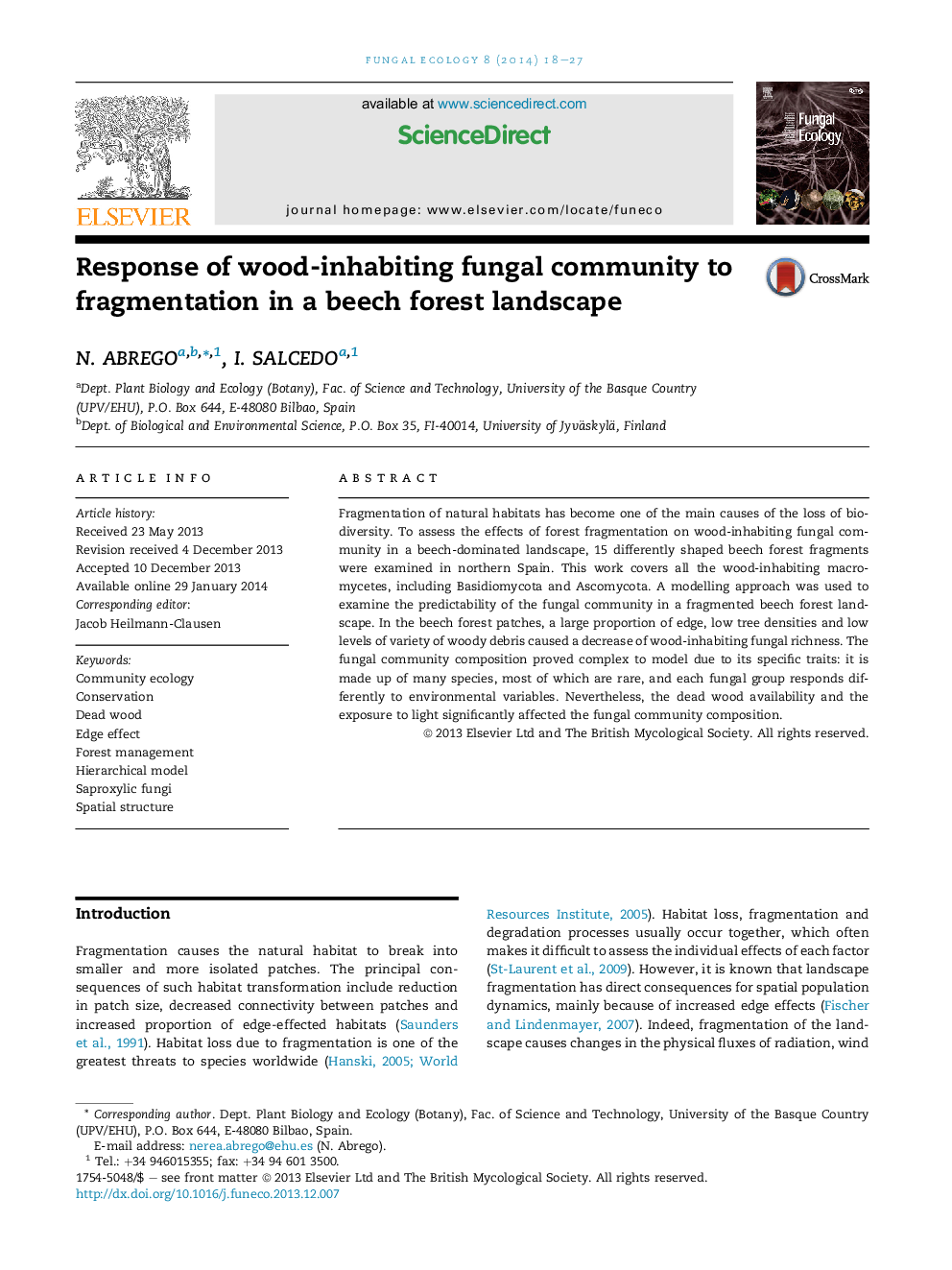| Article ID | Journal | Published Year | Pages | File Type |
|---|---|---|---|---|
| 8384707 | Fungal Ecology | 2014 | 10 Pages |
Abstract
Fragmentation of natural habitats has become one of the main causes of the loss of biodiversity. To assess the effects of forest fragmentation on wood-inhabiting fungal community in a beech-dominated landscape, 15 differently shaped beech forest fragments were examined in northern Spain. This work covers all the wood-inhabiting macromycetes, including Basidiomycota and Ascomycota. A modelling approach was used to examine the predictability of the fungal community in a fragmented beech forest landscape. In the beech forest patches, a large proportion of edge, low tree densities and low levels of variety of woody debris caused a decrease of wood-inhabiting fungal richness. The fungal community composition proved complex to model due to its specific traits: it is made up of many species, most of which are rare, and each fungal group responds differently to environmental variables. Nevertheless, the dead wood availability and the exposure to light significantly affected the fungal community composition.
Keywords
Related Topics
Life Sciences
Agricultural and Biological Sciences
Ecology, Evolution, Behavior and Systematics
Authors
N. Abrego, I. Salcedo,
